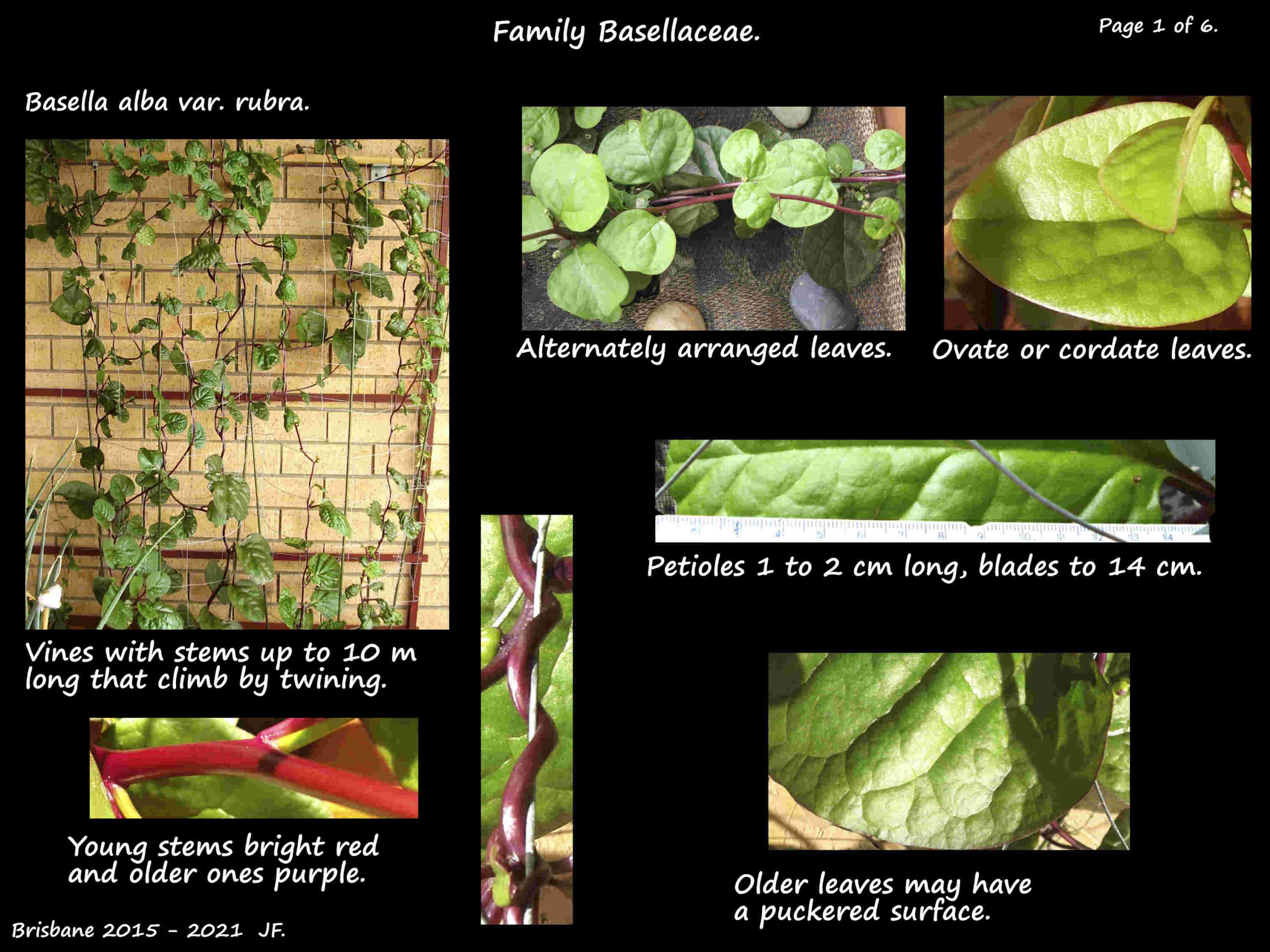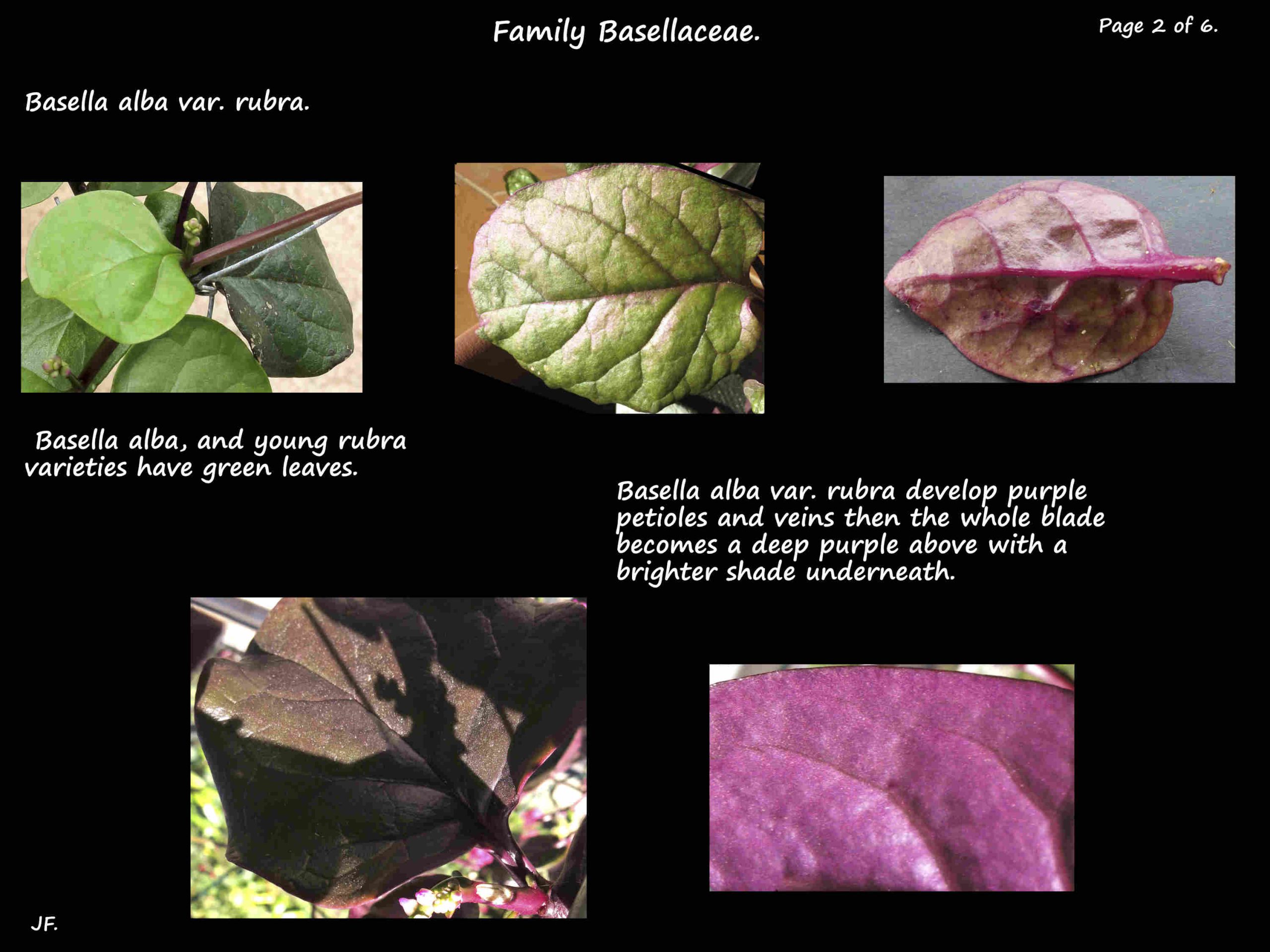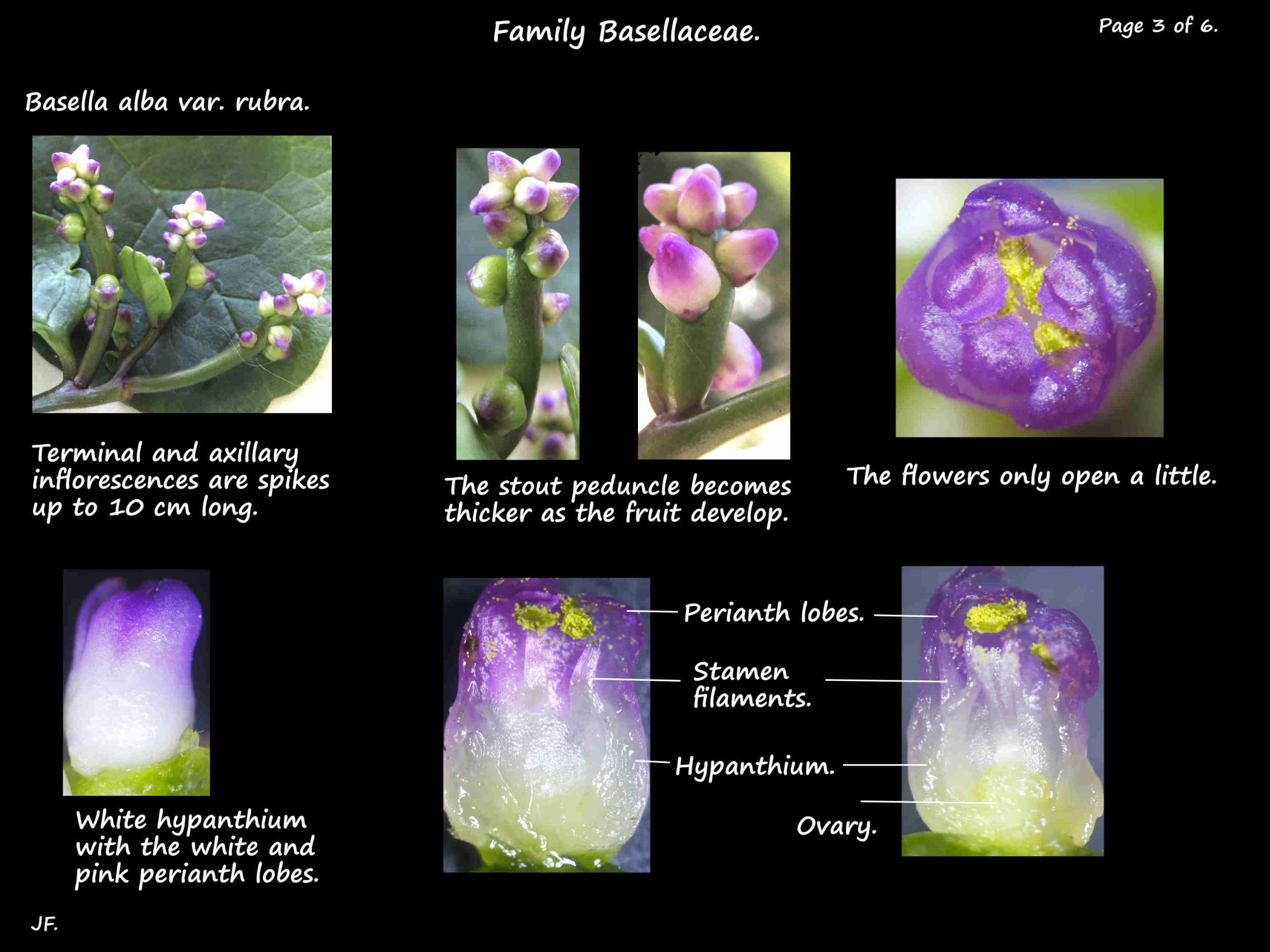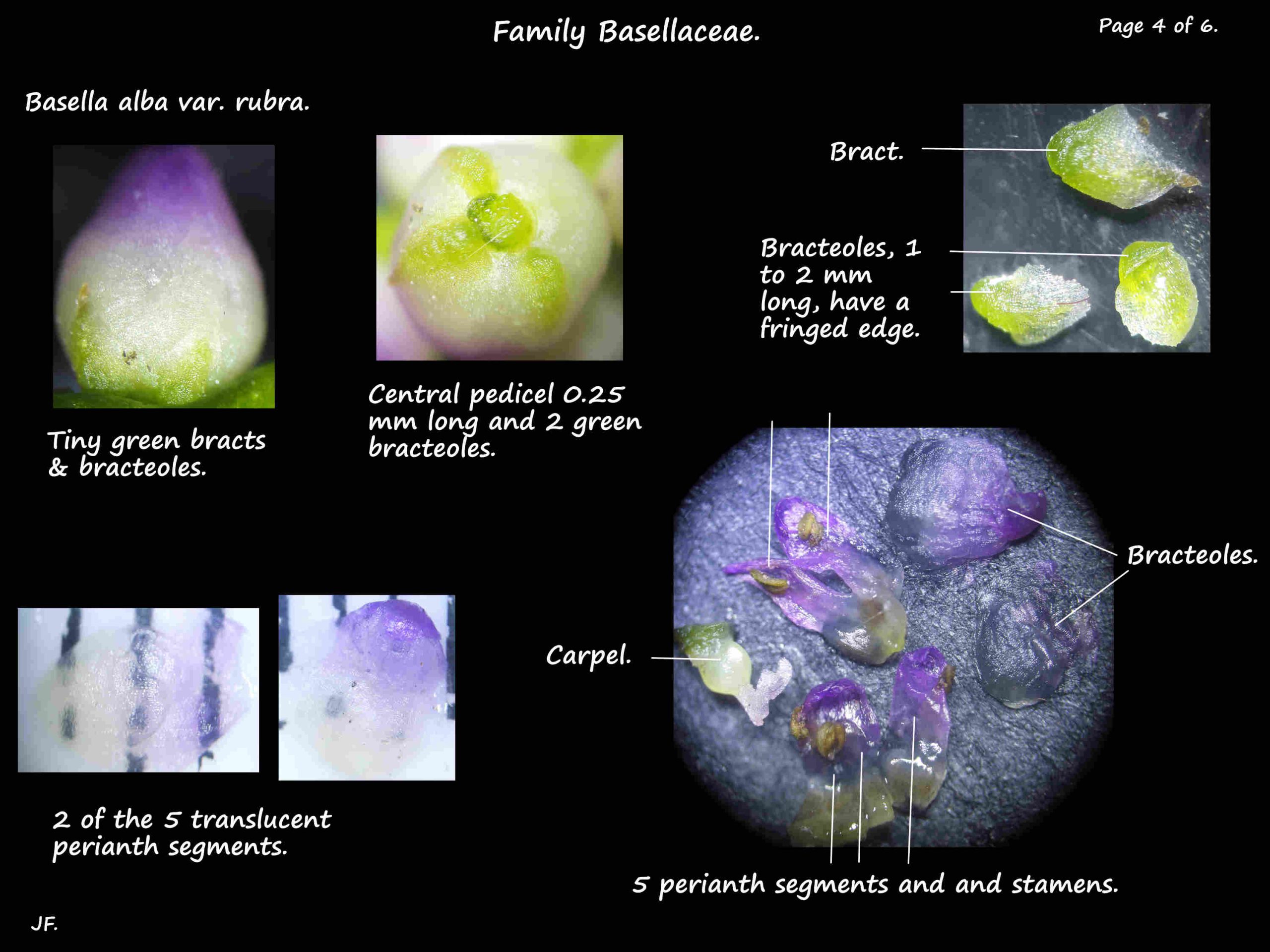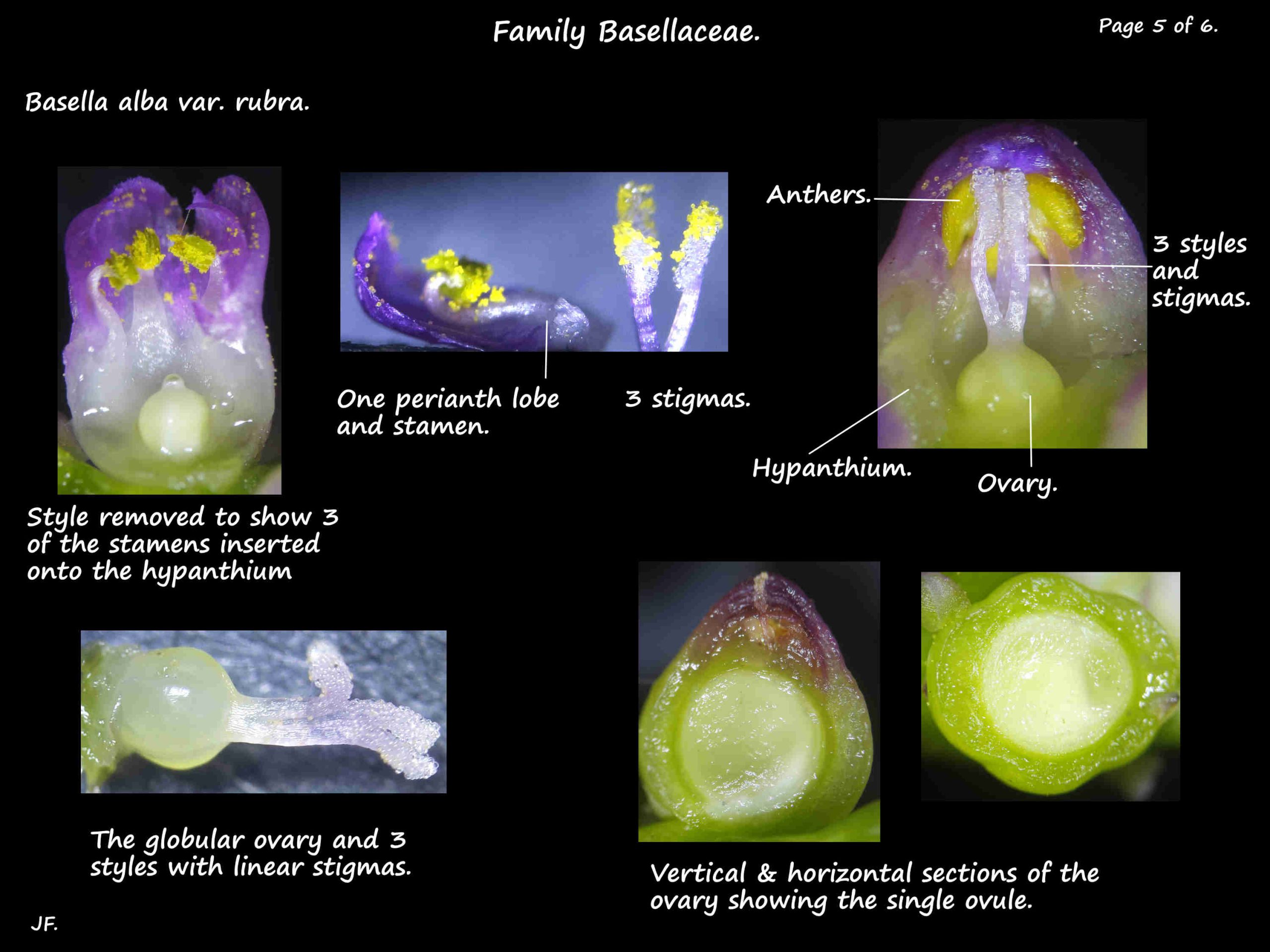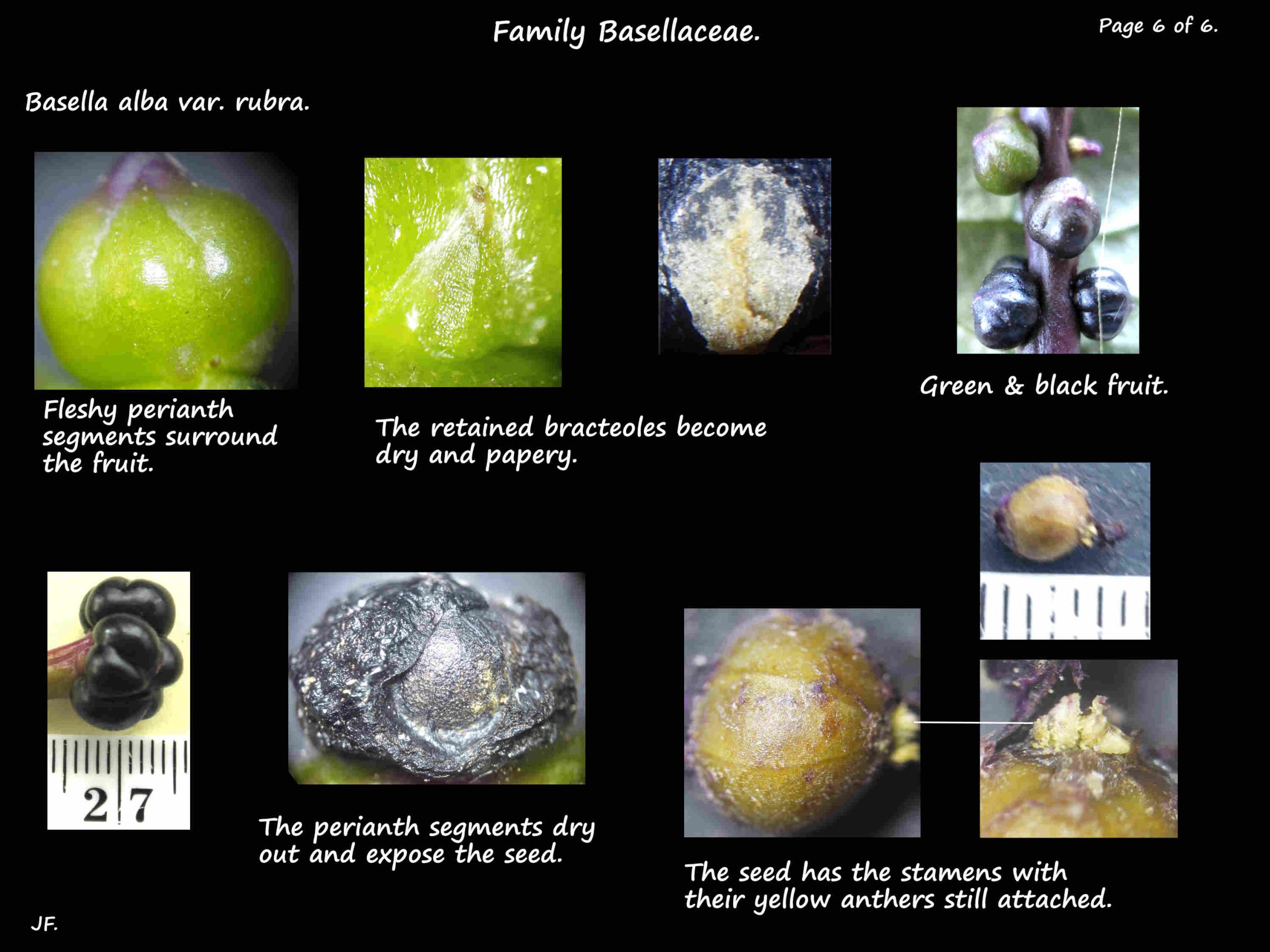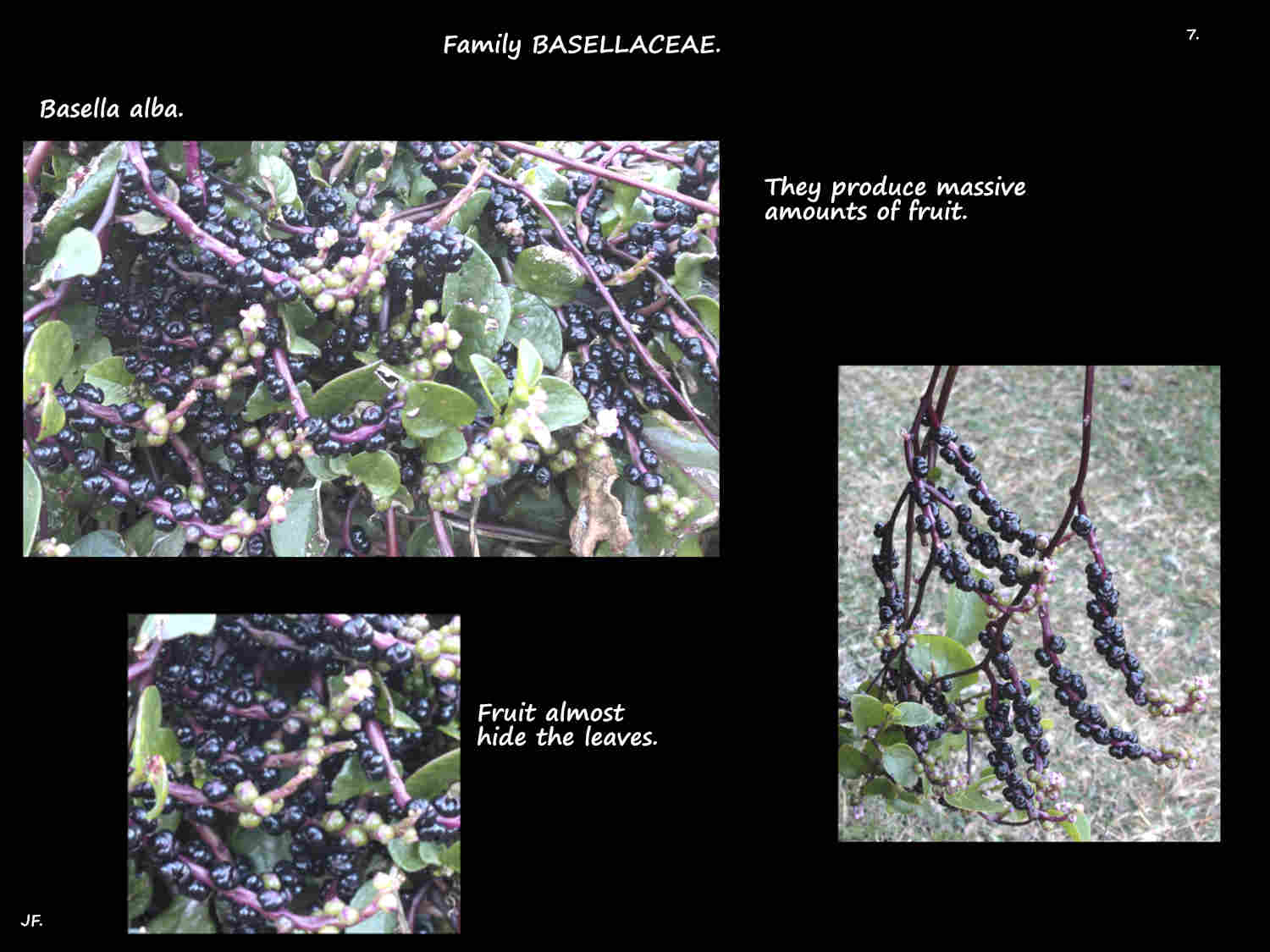Basella alba.
There are 5 species in the Basella genus and Basella alba is the type species.
Malabar or Ceylon spinach has a number of synonyms including Basella rubra.
It is native to the Indian area, Southeast Asia and New Guinea.
Naturalised in Australia it is used as a leafy green vegetable.
A twining vine with smooth, round, branching stems that can be up to 10 m long.
There are 2 varieties:
Basella alba var. alba with green stems and leaves and
Basella alba var. rubra with red stems and red to purple leaves.
The leaves, on petioles 1 to 2 cm long, are alternately arranged.
Up to 14 cm long the fleshy blade is cordate, elliptic or lanceolate.
The terminal and axillary inflorescences are spikes up to 10 cm long.
The peduncle becomes thicker as the fruits develop.
The small bisexual flowers, with almost no stalk, have parts in fives.
They never open completely.
Descriptions of the perianth vary depending on whether the outer segments are
regarded as bracteoles or sepals and the inner ones as sepals or petals.
They are sometimes just referred to as tepals, petal-like tepals or perianth segments.
The ovate bract and the 2 triangular bracteoles are only 1 to 2 mm long.
There are 5 overlapping, 4 to 5 mm long, ovate to elliptic somewhat fleshy segments in the perianth.
Their bases are fused with the bases of the stamen filaments forming a perianth tube.
Thin and translucent inner segments are white with red or pink tips.
The 5 stamens insert onto the perianth tube or hypanthium opposite the perianth lobes.
The dorsi-fixed anthers open via longitudinal slits.
The globular ovary, surrounded by, but free of the hypanthium, is superior.
Of 3 fused carpels it has 1 locule with one basifixed ovule.
There can be 3 styles or one that is divided into 3 almost to the base.
There are 3 linear stigmas.
The roughly globular fruit are surrounded by the fleshy perianth.
They mature from green to red and a purple so deep it looks black.
The bracteoles and stamens also remain on the fruit.
As the perianth dries out it exposes the single 5 mm round seed often with the stamens still attached.
J.F.

